The depletion region consists of immobile charge carriers. So on the p side, these are the electrons that are loosely bound to the crystal lattice. On the n side, these are the holes that are loosely bound to the crystal lattice, i.e. the positively charged ionized dopants left behind from those electrons injected into the p side during the formation of the depletion region.
The electrons that comprise the p side's depletion region prevent further diffused (mobile) electrons from recombining in that region; they're already occupying states there. Farther into the p side, diffused electrons can recombine, since there are unoccupied states, i.e. holes. So the concentration of mobile electrons drops off very rapidly right after the depletion region ends. This is why we see the steep drop-off of \$E_{F_{n}}\$ on the p side.
Similarly, the holes that comprise the n side's depletion region prevent further diffused holes from recombining in that region. Farther into the n side, diffused holes can recombine there. This coincides with the sharp increase of \$E_{F_{p}}\$, as there is a sharp increase in the concentration of mobile electrons.
That's for the forward biased case. For the reverse-biased case, we see something like this:

We can make similar arguments in this case. The depletion region of each side is formed in the same way as in the forward bias case, though each gets a little wider in reverse bias. This widening happens on the n side because the reverse biasing pulls the mobile electrons on the n side away from the junction (i.e. closer toward that side's terminal), leaving behind more positively ionized donor atoms towards the junction. Conversely, on the p side, the reverse biasing pulls the mobile holes on the p side away from the junction, leaving behind more negatively ionized acceptor atoms towards the junction.
Since we assume low-level injection, the majority carriers of each side are also assumed to be distributed evenly/uniformly; i.e. any gradient/change in majority carrier concentration for either side is negligible because the majority carrier concentration dwarfs the minority carrier concentration. That is, \$p_{p} >> n_{p}\$ such that \$p_{p} + \Delta p_{p} \approx p_{p}\$, and \$n_{n} >> p_{n}\$ such that \$n_{n} + \Delta n_{n} \approx n_{n}\$. Thus, for the p side, the majority holes are assumed to be evenly distributed across the p region. This coincides with \$ E_{F_{p}} \$ in the p side's quasi-neutral region (QNR) (the region of the p side that is not the depletion region) being constant/flat in the diagram above. The mobile minority electrons of the p side's QNR, however, are more concentrated away from the junction. This is because the p side's depletion region is negative, so it repels the minority electrons on that side away from there. This is why we see a dip in \$ E_{F_{n}} \$ on the p side's QNR. (Conversely, the n side's depletion region is positive, so it repels the minority holes on that side, in the same way, away from the junction.)
The result is that we end up with a minority carrier distribution that looks like the one shown below:

Note that this figure/example above assumes a p region that's doped more heavily than the n region. This is why we see such a small/nearly negligible change in the minority electron concentration of the p region. Also note that the space between the vertical axes \$ n(x_{p}) \$ and \$ p(x_{n}) \$ is the depletion/space charge region of the pn junction.
This is why \$E_{F_{p}}\$ and \$E_{F_{n}}\$ "dip into" the conduction and valence bands (respectively), in the first figure above. On the p side, the "dipping" of \$E_{F_{n}}\$ into the valence band occurs near the beginning of its depletion region and indicates the lack of mobile (minority) electrons there (as described above). Only \$ E_{F_{n}} \$ dips down here because, again, we're assuming that the majority carriers are distributed uniformly, i.e. \$E_{F_{p}}\$ is constant across the p side, due to low-level injection.
Parallel arguments can be made to the n side and majority electrons/minority holes, but this answer has gone long enough. I'll leave that part to the reader as an exercise :)


